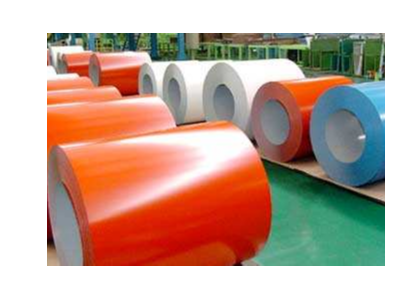
作为世界制造业中心,中国拥有世界上许多原材料和工业产品的最高产量。彩钢板作为一种新型的建筑材料,与传统的砖、瓦、钢混凝土结构相比,具有使用寿命长、节约用地、可循环利用等特点。它已广泛应用于公共建筑、工业厂房围墙等领域。现在,需求量空前增长。
Colored Coating Plate was born in America in 1936
The first activities to be used in architecture were parts such as shutters and rainproofs. Initially, the raw materials were single sheets, or continuous coated coils 2 inches wide, manufactured
by Amco Steel and Hernte Engineering in the United States.
Technological improvements were made in the United States in 1949
After World War II, with the economic revival, industrial and civil buildings increasingly need wide color coated
steel plates. In the United States, the production process was also improved from the original 1-coat-1-bake to 2-coat-2-bake. Coloured steel sheet is widely used in construction, automobile, container, instrument shell and so on. But industrial and
civil buildings are still the most used, and the proportion of color-coated panels used in buildings in the United States is about 75%.
Colored Coating Plate Produced in Japan in 1954
In 1954, a single color coated sheet was produced.
Continuous color coated steel plate production line began in 1964
In 1969, the output increased steadily. Because of the earthquake zone in Japan, lightweight and earthquake-resistant color-coated steel sheet buildings were more popular,
accounting for about 76% of the domestic consumption.
In 1961 the United Kingdom also began to produce color coated panels.
Subsequently, developed countries such as Germany and Sweden began to produce large quantities of color coated
steel plates, mainly for construction purposes.
Asian countries started production in the 1970s
Some countries and regions in Asia: South Korea, Philippines and Taiwan have begun to have continuous color coated steel plate production lines.
Import of Production Equipment in China in 1980s
In the 1980s, the emerging economies represented by China began to research, develop or import the production equipment of color coated steel plates. During the Sixth Five-Year Plan period,
the State Planning Commission and the Science and Technology Commission organized three ministries of metallurgy, chemical industry and light industry to include the development of color coated steel plates in the national development plan. Subsequently,
Baosteel, WISCO and other companies introduced foreign color coated steel plate production lines. At the end of the 1980s, Baosteel and WISCO produced the first batch of color coated steel plates in mainland China. After 1995, the demand and production
capacity of color coated steel sheets in China have been greatly improved. At present, the production capacity of color coated steel sheet exceeds 20 million tons per year.
In the 1990s, India began to produce color coated sheets.
In the
late 1990s, India and West Asian countries began to produce color coated steel plates.
Nowadays, life is inseparable from color painting board
As a world manufacturing center, China has the highest output of many raw materials and industrial
products in the world. As a new building material, color-coated steel plate has the characteristics of long life, land saving and recyclability compared with traditional brick, tile and steel-concrete structures. It has been widely used in public
buildings and industrial plant enclosure and other fields. Now the demand has been unprecedented growth.